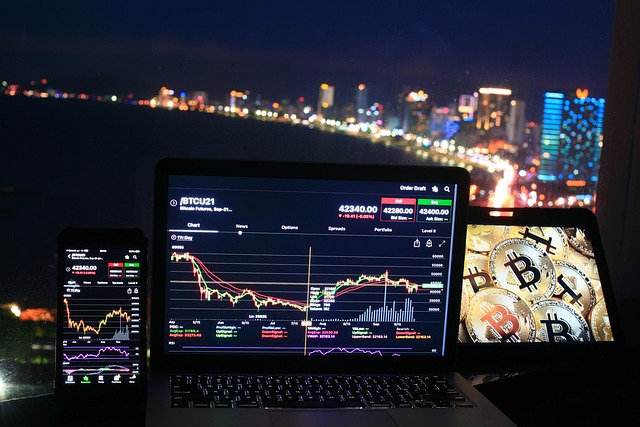Investing in Times of Uncertainty: Strategies for Resilience
In an increasingly volatile financial landscape, the phrase “uncertainty” has almost become a staple in the lexicon of investors. Whether it pertains to fluctuating economic indicators, political unrest, or the unpredictable nature of global markets and pandemics, the challenges posed by uncertainty can be overwhelming. However, amidst this volatility lies an opportunity for resilient investment strategies that can weather the storm and potentially yield rewarding outcomes. This article delves into effective investing strategies designed to bolster resilience in uncertain times.
Understanding Market Uncertainty
Investing under uncertain conditions requires a firm grasp of what drives market volatility. Economic uncertainty can stem from numerous factors, including inflation rates, unemployment levels, interest rate changes, geopolitical tensions, and natural disasters. Often, these uncertainties can lead to swift market shifts, with asset prices fluctuating wildly as investor sentiment ebbs and flows. In these scenarios, it’s critical for investors to remain informed, vigilant, and prepared to adapt their strategies.
The Importance of a Diversified Portfolio
Diversification is a fundamental principle of investing that can serve as a bedrock during uncertain times. A well-diversified portfolio can mitigate risks associated with market fluctuations by spreading investments across various asset classes, industries, and geographies. This strategy allows investors to avoid putting all their eggs in one basket, which is particularly important during volatile periods.
In addition to traditional asset classes like stocks and bonds, consider including alternative investments such as real estate, commodities, or even cryptocurrencies. Each of these asset classes behaves differently in varying economic conditions, providing a cushion against downturns in any single segment of the market. By also considering geographic diversification, investors can benefit from economic growth in different regions, counterbalancing the effects of localized downturns.
Reassessing Risk Tolerance
During times of uncertainty, it’s essential for investors to reassess their risk tolerance. This introspection often leads to a better understanding of one’s comfort level with investments that may offer higher volatility but potentially greater returns. Market downturns can induce panic, prompting emotional decision-making that can derail long-term investment strategies.
Developing a deeper awareness of risk tolerance involves evaluating personal financial situations, investment objectives, and timelines. An investor who is closer to retirement, for example, may prefer more conservative investment options to preserve capital, whereas a younger investor may be more inclined to embrace risk for the chance of higher long-term gains.
Embrace Defensive Investment Strategies
In uncertain times, defensive investment strategies may prove beneficial. These strategies employ a conservative approach aimed at minimizing risk and protecting capital. Defensive investors often pivot towards dividend-paying stocks, which provide a steady income stream even in turbulent markets. Blue-chip companies—established firms with a track record of financial stability—are typically favored in defensive strategies as they tend to withstand economic downturns better than their less-established counterparts.
Another approach to defensive investing includes utilizing bonds or bond funds, which are often perceived as safer investments compared to stocks. While yields may be lower than those found in equities, bonds can act as a stabilizing force in a portfolio during uncertain times.
Investing in Quality Over Quantity
During periods of instability, the focus should shift from quantity to quality. This involves seeking out high-quality companies with strong balance sheets, robust cash flows, and competitive advantages within their industries. Quality stocks often outperform their lower-quality peers during market downturns, as they are better equipped to weather financial challenges.
Investors should scrutinize financial health indicators, including debt levels, margins, and overall profitability, to identify these resilient firms. Staying informed about the companies’ long-term strategies can also provide insights into their potential for growth, which is especially pertinent in uncertain environments.
Adopting a Long-Term Perspective
In times of uncertainty, maintaining a long-term perspective can be pivotal. Short-term market fluctuations can be disquieting; however, history has consistently shown that markets tend to recover over time. This resilience emphasizes the importance of patient investing, even when external factors create pressures to react or panic.
Investors should reassess their investment horizons, focusing on long-term goals rather than attempting to time market movements. Implementing a buy-and-hold strategy allows investors to ride out short-term volatility, only re-evaluating their investments with regard to their long-term vision.
Utilizing Automated and Systematic Approaches
Adopting automated investing strategies, such as dollar-cost averaging, can also cultivate resilience. This process involves consistently investing a fixed amount of money into the market at regular intervals, regardless of market conditions. By acquiring more shares when prices are low and fewer shares when prices are high, investors can reduce the impact of volatility over time.
Additionally, the rise of robo-advisors can simplify the investing process. These algorithm-driven platforms assist with portfolio management based on an individual’s risk tolerance and investment goals, minimizing emotional decision-making and encouraging adherence to a pre-defined strategy.
Staying Informed and Educated
Knowledge is power in uncertain times. Staying informed about market trends, economic indicators, and global political dynamics can enhance an investor’s ability to make educated decisions. Continuous education in investing—whether through reading, watching relevant content, attending seminars, or collaborating with financial advisors—can provide better insights into the market landscape and improve overall investment strategies.
Embracing Flexibility and Adaptability
Resilience in investing also entails flexibility and adaptability. Investors should remain open to recalibrating their strategies based on changing market conditions or new information. This doesn’t mean reacting impulsively but being prepared to pivot when necessary, which can be critical in navigating uncertain times successfully.
Flexibility may also involve reassessing sector allocations. Some sectors tend to flourish during economic downturns. For example, consumer staples and utilities often perform better when compared to more cyclical industries, as demand for essential goods and services remains steady regardless of economic fluctuations. Recognizing these shifts and acting accordingly can bolster a portfolio’s resilience.
Building an Emergency Fund
Having an emergency fund is another essential step towards financial resilience. This fund can act as a safety net, providing liquidity in times of crisis and preventing the need to sell investments during market downturns. Financial advisors often recommend setting aside three to six months’ worth of living expenses to ensure that unexpected costs do not derail investment strategies.
Having this stability allows investors to stay committed to their long-term strategies, avoiding emotional reactions that can lead to suboptimal decisions.
Conclusion: Resilience as a Mindset
Investing in uncertain times necessitates a mindset shift focused on resilience, patience, and adaptability. While the landscape may be fraught with challenges, employing the right strategies can ensure continued growth and wealth preservation. By diversifying portfolios, reassessing personal risk tolerance, embracing quality investments, and maintaining a long-term perspective, investors can navigate turbulent waters and emerge stronger.
In the end, uncertainty will always be part of the financial ecosystem. But with the right knowledge and strategies, investors can turn challenges into opportunities that foster lasting success.





